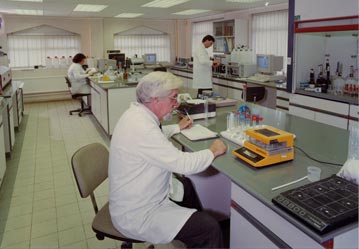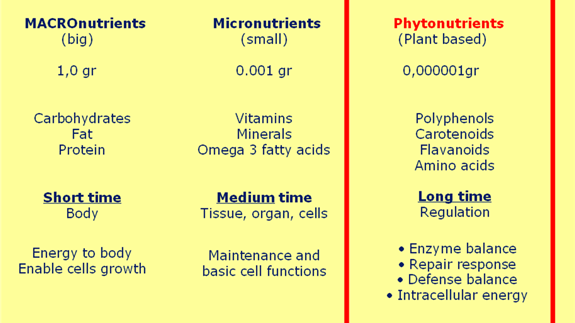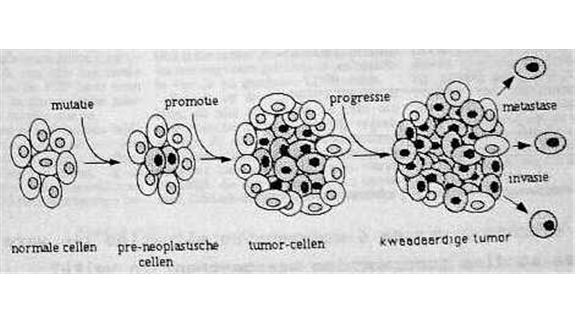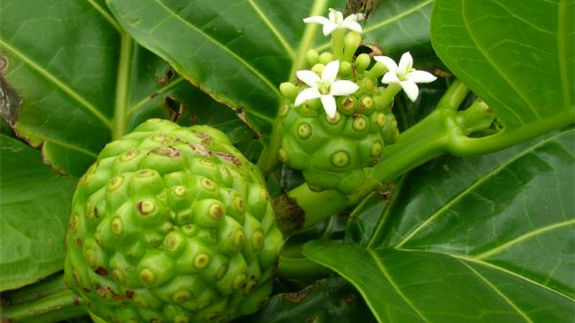
Publicaties over Noni en Samento
A. SPECIFIEK NONI
WERKING ALGEMEEN:
Noni sap is de sap van de vrucht van de Noniboom (Latijn: Morinda citrifolia) welke groeit op de Polynesische eilanden, waar de sap als gezondheidstonicum wordt gebruikt. De Polynesiërs gebruikten de sap om de vitaliteit te bevorderen.Doordat de vrucht in de vrije natuur geoogst wordt (wilde teelt) op de Fiji-eilanden kunnen we u een zeldzaam zuiver natuurprodukt aanbieden zonder enige toevoeging of verontreiniging.
Bio Noni-sap Voordeel 1 L
De werkzaamheid van Voordeel Noni 1 L. is zo hoog omdat er géén enkele vorm van kunstmatige verbouwing aan te pas komt, maar ook omdat ze het een oorspronkelijke plantensoort betreft die niet door teling essentiële stoffen is kwijtgeraakt maar een buitengewone samenstelling heeft van bekende en onbekende werkzame inhoudsstoffen. De oerkracht van dit stukje natuur garandeert daardoor een hoge werkzaamheid, mede door de synergetische werkzaamheid van circa 60 bekende inhoudsstoffen.
veel onderzoeksgegevens over noni vindt u op http://robhamers.jouwweb.nl/interessante-links
Nonisap vergroot het weerstandsvermogen, verbetert de nachtrust en vergroot het energie niveau. Noni werkt door de stimulans van endorfinen in de hersenen stemmingsverbeterend en kalmerend.
Recent onderzoek van Dr. Baklayan uit München bevestigt de werking als Immuun-booster die allerlei afbraakprocessen tegengaat. In India wordt het als potentie-verhogend middel gebruikt.
De stof Damnacanthal die in Noni zit heeft volgens onderzoek een gezond regulerende werking op celdeling (zoals bij kanker het geval is).
Werking:
- De nonivrucht stimuleert het totale immuunsysteem door de productie van immuuncellen te bevorderen. Noni wordt ingezet tegen de volgende infectieproblemen en
auto-immuunziekten:
- Reumatoïde artritis, fibromyalgie, psoriasis
- Thyreoïditis of schildklierontsteking, ziekte van Crohn, lupus,
- Diabetes mellitus, gastritis,
Ontstekingsziekten waar Bio Noni-sap Voordeel 1 L op werkt:
- Artritis, jicht, artrose,
- Bursitis of beursslijmvliesontsteking, tendinitis of peesontsteking,
- Myalgie of spierpijn, spierstijfheid,
- Carpal tunnel syndrome,
- Lumbago of lage rugpijn,
- Allergiën, astma.
Artikel 2000 BIO
Artikel ProfDr Westendorf uit Bio2 2009 goji
aloe-vera acai curcuma centella ginseng ginkgo kruiden reishi cordysceps cat's claw samento
Joan M Lappe, Dianne Travers-Gustafson, K Michael Davies, Robert R Recker and Robert P Heaney
Vitamin D and calcium supplementation reduces cancer risk: results of a randomized trial
American Journal of Clinical Nutrition, Vol. 85, No. 6, 1586-1591, June 2007
Kitchin B, Morgan SL. : Not just calcium and vitamin D: other nutritional considerations in osteoporosis.
Curr Rheumatol Rep. 2007 Apr;9(1):85-92

Observations Made During the Experiment for Treatment of Acute Respiratory Viral Infections with Concentrated Liquid Extract of Noni Fruit, Lechitel Health Center, Sofia, Bulgaria, March 2005
Lung Cancer: More Hope with Samento and Noni
Cancer Fix Magazine, Singapore, February 2005
Noni Extract Recommend To Treat Colds And Flu
What's the Alternative, Sunday Times, London, England, December 2004
Would you like to recover from colds and influenza in 3 hours?
James Howenstine, MD, NewsWithViews.com, November 2004
Morinda Citrifolia Has Very Weak Estrogenic Activity In Vivo
Thai Journal of Physiological Sciences, April 2004
Antitumour potential of a polysaccharide-rich substance from the fruit juice of Morinda citrifolia (Noni) on sarcoma 180 ascites tumour in mice
Phytotherapy Research, December 2003
An immunomodulatory polysaccharide-rich substance (Noni-ppt) from the fruit juice of Morinda citrifolia has been found to possess both prophylactic and therapeutic potentials against the immunomodulator sensitive Sarcoma 180 tumour system. The antitumour activity of Noni-ppt produced a cure rate of 25%-45% in allogeneic mice and its activity was completely abolished by the concomitant administration of specific inhibitors of macrophages (2-chloroadenosine), T cells (cyclosporine) or natural killer (NK) cells (anti-asialo GM1 antibody). Noni-ppt showed synergistic or additive beneficial effects when combined with a broad spectrum of chemotherapeutic drugs, including cisplatin, adriamycin, mitomycin-C, bleomycin, etoposide, 5- fl uorouracil, vincristine or camptothecin. It was not beneficial when combined with paclitaxel, cytosine arabinoside, or immunosuppressive anticancer drugs such as cyclophosphamide, methotrexate or 6-thioguanine. Noni-ppt also demonstrated beneficial effects when combined with the Th1 cytokine, interferon gamma, but its activity was abolished when combined with Th2 cytokines, interleukin-4 or interleukin-10, thereby suggesting that Noni-ppt induces a Th1 dominant immune status in vivo. The combination of Noni-ppt with imexon, a synthetic immunomodulator, also demonstrated beneficial effects, but not when combined with the MVE-2 copolymer, a high molecular weight immunomodulator. It was also not effective when combined with interleukin-2 or interleukin-12. Copyright 2003 John Wiley & Sons, Ltd.
PMID: 14669249 [PubMed - indexed for MEDLINE]
Inhibition of angiogenic initiation and disruption of newly established human vascular networks by juice from Morinda citrifolia (noni)
Angiogenesis, October 2003
A natural musaceas plant extract inhibits proteasome activity and induces apoptosis selectively in human tumor and transformed, but not normal and non-transformed, cells
International Journal of Molecular Medicine, August 2003
Regulation of anthraquinone biosynthesis in cell cultures of Morinda citrifolia,
Journal of Plant Physiology, June 2003
goji l-vera acai curcuma centella ginseng ginkgo kruiden reishi cordysceps cat's claw samento
Morinda citrifolia: A Review on Noni
Scot Nelson, University of Hawaii at Manoa, April 2003
Medicinal uses or purported applications (contemporary, worldwide) Purported treatments for ailments including attention deficit disorder, addictions, allergies,
arthritis, asthma, brain problems, burns, cancer, cardiovascular disease, chemical sensitivity, chronic fatigue, diabetes, digestive
problems, endometriosis, fibromyalgia, gout, hypertension, immune deficiency, infection, inflammation, jetlag, multiple sclerosis, muscle and joint pain, polio,
rheumatism, severed fingers, sinus, and veterinary medicine.
A cross-cultural study: anti-inflammatory activity of Australian and Chinese plants
Journal of Ethnopharmacology, March 2003
Morinda citrifolia (Noni): A literature review and recent advances in Noni research,
Acta Pharmcologica Sinica, December 2002

Samenstelling en werking Noni
Inhoudsstoffen:
| Mineralen en sporenelementen |
|
IJzer, Kalium, Calcium,Koper, Magnesium, Selenium en Zink. |
| Noni-PPT |
|
Dit mengsel van poysacchariden,aminosuikers en eiwitten zorgt voor een activering van ons immuunsysteem. |
| |
| Glycosiden |
|
Noni bevat het natuurlijke antibiotisch werkzame aucubine en asperuloside. |
| Scopoletine |
|
|
| Xeronine |
|
|
| Vit. A, B, C, E en H |
|
Diverse werkingen. |
r
belastingen inkomsten
|
Chemical Constituents of Noni (Morinda citrifolia)
|
| Following is a partial list of chemical constituents isolated from noni, and their proposed or documented medicinal qualities or cultural significance. The table was assembled from the literature presented in the “Noni Bibliography” on this web site. There are reportedly numerous other compounds isolated from the noni plant that may have significant biological activity and are currently under investigation. |
| Noni Plant organ(s) |
Compound(s) |
Proposed or documented effects of compounds |
Discussion & Notes |
| FRUIT and FRUIT JUICE |
Alkaloids (xeronine) |
In theory, xeronine enhances enzyme activity and protein structure |
*According to some authorities, the existence and the proposed effects of the so-called alkaloid, xeronine, and/or the compound, pre-xeronine, have not been substantiated. |
| |
Polysaccharides (glucuronic acid; galactose; arabinose; rhamose; glycosides; trisaccharide fatty acid ester) |
Immuno-stimulatory; immuno-modulatory; anti-bacterial; anti-tumor; anti-cancer. |
A promising area for research and a highly beneficial set of compounds. |
| |
Scopoletin |
Dilates vasculature & lowers blood pressure; anti-bacterial & anti-fungal; anti-inflammatory; analgesic; histamine-inhibiting; arthritic conditions; allergies; sleep disorders; migraine headaches; depression; Alzheimer’s disease. |
Potentially wide applications. |
| |
Vitamins and Minerals: magnesium; iron; potassium; selenium; zinc; copper; sulfur; ascorbic acid (vitamin C). |
The positive medical effects of the vitamins and minerals in noni juice are well documented. For any questions or medical and health concerns, consult a physician or dietician. |
Noni juice is an excellent source of vitamin C. |
| FOLIAGE & CELL SUSPENSIONS |
Anthraquinones (damnacanthal) |
Antiseptic & antibacterial effects in digestive tract (Staphylococcus, Shingela, Salmonella). |
Internal application. |
| |
Glycosides (flavonol glycoside; iridoid glycoside, “citrifolinoside”) |
Anti-cancer effects: (DPPH free radical scavenging activity; inhibition of UVB-induced Activator Protein-1 activity in cell cultures. |
Discovery reported in 2001. |
| ROOTS |
Anthraquinones (damnacanthal) |
Inhibits formation of lung carcinoma in mice. |
Research from University of Hawai’i at Manoa |
| |
Morindin and Morindone |
Dyes, yellow and red colorants used for tapa cloth; anti-bacterial. |
Culturally significant. |
|
 |
ALOYSIUS KRUIDEN
Antimalarial activity of extracts and alkaloids isolated from six plants used in traditional medicine in Mali and Sao Tome,
Phytotherapy Research, November 2002
Antitubercular constituents from the hexane fraction
of Morinda citrifolia Linn. (Rubiaceae)
Phytotherapy Research, November 2002
Proceedings of the 2002 Hawaii Noni Conference
University of Hawaii at Manoa, October 2002
Anti-cancer Activity of Noni Fruit Juice Against Tumors in Mice
2002 Hawaii Noni Conference, October 2002
Abstract of presentation Noni fruit juice is one of the most popular traditional medicines among native Polynesian islanders in South
Pacific Ocean. They use it for diabetes, high blood pressure, cancer, injury, arthritis, digestive distress, arteriosclerosis, pain relief, senility etc.
We have confirmed the antitumor potential at animal level that noni fruit juice could inhibit murine tumor growth with a definite curative potential.
The Ethnobotany of Noni (Morinda citrifolia L., Rubiaceae)
2002 Hawaii Noni Conference, October 2002
Cytotoxicity of Water and Ethanol Extracts of Morinda citrifolia (L.) Against Normal Epithelial and Breast Cancer Cell Lines
2002 Hawaii Noni Conference, October 2002
Preliminary investigation of the anti-inflammatory properties
of an aqueous extract from Morinda citrifolia (noni),
Proceedings of the Western Pharmacology Society, April 2002
From Polynesian Healers to Health Food Stores: Changing Perspectives of Morinda citrifolia(Rubiaceae)
Integrative Cancer Therapies, January 2002
Cancer preventive effect of Morinda citrifolia (Noni)
Annals of the New York Academy of Sciences, December 2001
Flavonol glycosides and novel iridoid glycoside from
the leaves of Morinda citrifolia
Journal of agricultural and food chemistry, September 2001
Two Novel Glycosides from the Fruits of Morinda Citrifolia (Noni) Inhibit AP-1Transactivation and Cell Transformation in the Mouse Epidermal JB6 Cell Line1, Cancer Research, August 2001
University of Hawaii Studying Noni Plant On Cancer
Researchers get $340,000 from U.S. government, July 2001
Noni Cultivation in Hawaii
University of Hawaii at Manoa, March 2001
ALOYSIUS KRUIDEN
The Noni Plant: A Hawaiian Gift of Healing
By Loretta Drumgool, January 2001
Hawaiian plant could fight TB (Tuberculosis)
BBC News, December 2000
Novel glycosides from noni (Morinda citrifolia)
Journal of Natural Products, August 2000
Noni: A Foul-Smelling Fad or a Polynesian Miracle Plant?
Vitamin Retailer, May 2000

The NextNoni: A Foul-Smelling Fad or a Polynesian Miracle Plant?
Vitamin Retailer, May 2000
Novel trisaccharide fatty acid ester identified from the fruits of
Morinda citrifolia (Noni)
Journal of agricultural and food chemistry, December 1999
An immunomodulatory polysaccharide-rich substance from the fruit juice of Morinda citrifolia (noni) with antitumour activity,
Phytotherapy Research, August 1999ALOYSIUS KRUIDEN
Hawaiian Noni- Prize Herb of Hawaii and the South Pacific
by Rita Elkins, Woodland publishing, August 1998
Noni: Nature’s Health-Enhancing Fruit
from Noni: Nature’s Amazing Healer by Dr. N. Solomon, April 1998
Results of study conducted with 8000 patients using Noni,
Neil Solomon, MD, PhD- author of Noni: Nature’s Amazing Healer, April 1998
Immunomodulation contributes to the anticancer activity
of morinda citrifolia (noni) fruit juice
Proceedings of the Western Pharmacology Society, August 1996
Cytoplasmic Acidification and Secondary Metabolite Production in Different Plant Cell Suspensions’,
Plant Physiology, October 1994
Anticancer activity of Morinda citrifolia (noni) on intraperitoneally implanted Lewis lung carcinoma in syngeneic mice
Proceedings of the Western Pharmacology Society, June 1994
Induction of normal phenotypes in ras-transformed cells by damnacanthal from Morinda citrifolia
Cancer Letter, September 1993
Native Plants Can Heal Your Wounds
Honolulu Advertiser & Star Bulletin, February 1992
goji aloe-vera acai curcuma centella ginseng ginkgo kruiden reishi cordysceps cat's claw samento
Analgesic and behavioural effects of Morinda citrifolia
Planta Medica, October 1990
Some chemical constituents of Morinda citrifolia
Planta Medica, June 1979 ALOYSIUS KRUIDEN
Anthraquinone production by cell suspension cultures of Morinda citrifolia,
Planta Medica, July 1975
Isolation, identification and biosynthesis of anthraquinones in cell suspension cultures of Morinda citrifolia,
Planta Medica, May 1975
Studies on Morinda citrifolia L. II.
J Am Pharm Assoc Am Pharm Assoc, May 1960
B Samento
Diverse werkingsgebieden van SAMENTO: SELECTED RESEARCH; KLIK HIER!

1. Abbott IA. La‘au Hawai‘i: Traditional Hawaiian Uses of Plants. Honolulu, Hawaii: Bishop Museum Press; 1992.
2. Biggs BG. Contemporary healing practices in east Futuna. In. Parsons CDF ed. Healing Practices in the South Pacific. Laie,
Hawaii: Institute for Polynesian Studies; 1985:108-128.
3. Gutmanis J. Kahuna La‘au Lapa’au: The Practice of HawaiianHerbal Medicine.HongKong: Island Heritage Publishing; 1994.
4. Krauss B H. Native Plants Used as Medicine in Hawaii. 2nd ed. Honolulu, Hawaii: Lyon Arboretum; 1981.
5. McClatchey W. The ethnopharmacopoeia of Rotuma. J. Ethnopharm. 1996;50:147-156.
6. O’Rourke-George L. An Ethnobotanical Study of Traditional Medicine in Tonga [master’s thesis]. Provo, Utah: Brigham Young
University;1989.
7. Whistler WA. Polynesian Herbal Medicine. Lawai, Kaua‘i, Hawaii: National Tropical Botanical Garden; 1992.
8. Morton J. The ocean-going noni, or Indian Mulberry (Morinda citrifolia, Rubiaceae) and some of its “colorful” relatives. Econ
Bot. 1992;46:241-256.
9. Guppy HB. Plants, Seeds and Currents in theWest Indies and Azores. Covent Garden, London, England: Williams&Norgate; 1917.
10. Johansson JT. The genus Morinda (Morindae, Rubiodeae, Rubiaceae) in New Caledonia: taxonomy and phylogeny. Opera
Botanica. 1994;122:1-67.
11. Whistler WA. Polynesian plant introductions. In: Cox PA, Banack SA, eds. Islands, Plants, and Polynesians. Portland, Ore:
Dioscorides Press; 1991:41-66.
12. Terra GJA. Quality of Tropical Food Products: A Multi-Disciplinary Approach. Amsterdam, The Netherlands: Koninkliijk Instituut
voor de Tropen; 1966.
13. Jansen AAJ, Parkinson S, Robertson AFS, eds. Food and Nutrition in Fiji: An Historical Review. Vol 1. Food Production, Composition
and Intake. Suva, Fiji: The University of the South Pacific; 1990.
14. Lucas L. Plants of Old Hawaii. Honolulu, Hawaii: The Bess Press; 1982.
15. Kahiolo GW. He Moolelo No Kamapuaa: The Story of Kamapuaa. Mookini T, Neizmen EC, Tom D, trans. Honolulu, Hawaii:
Hawaiian Studies Program, University of Hawai‘i; 1978.
16. Leister E. Isolation, identification, and biosynthesis of anthraquinones on cell suspension cultures of Morinda citrifolia. Planta
Medica. 1975;27:214-224.
17. Degener O. Plants of Hawaii National Park Illustrative of Plants and Customs of the South Seas. Ann Arbor, Mich: Edward
Brothers; 1945.
18. McClatchey W. The Traditional Medicinal System and Ethnopharmacopoeia of Rotuma [master’s thesis]. Provo, Utah: Brigham
Young University; 1993.
19. Zepernick B. Arneipflanzen der Polynesier. Berlin, Germany: Verlag von Dietrich Reiner; 1972.
20. Handy ESC, Pukui MK, Livermore K. Outline of Hawaiian Physical Therapeutics. Honolulu, Hawaii: BishopMuseumPress; 1934.
21. Chun MN. Native Hawaiian Medicine. Honolulu, Hawaii: First People’s Productions; 1994.
22. McBride LR. Practical Folk Medicine of Hawaii. Hilo, Hawaii: The Petroglyph Press; 1975.
23. Hirazumi AY. Antitumor Studies of a Traditional Hawaiian Medicinal Plant, Morinda citrifolia (noni), in vitro and in vivo [doctoral
dissertation]. Honolulu, Hawaii: University of Hawai‘i; 1997.
24. Dixon AR, McMillen H, Etkin NL. Ferment this: the transformation of Noni, a traditional Polynesian medicine (Morinda
citrifolia, Rubiaceae). Econ Bot. 1999;53:51-68.
25. Heinicke RM. The pharmacologically active ingredient of noni. Pacific Tropical Botanical Garden Bulletin. 1985;15:10-14.
26. Hirazumi A, Furusawa E, Chou SC, Hokama Y. Anticancer activity of Morinda citrifolia (noni) on intraperitoneally implanted
Lewis lung carcinoma in syngenic mice. Proc West Pharm Soc. 1994; 37:145-146.
27. Sugiura K, Stock CC. Studies in a tumor spectrum. III. The effect of phosphoramides on the growth of a variety of mouse
and rat tumors. Can Res. 1955;15:38-51.
28.Hirazumi A, Fususawa E. An immunomodulatory polysacchariderich substance from the fruit juice of Morinda citrifolia (noni)
with anti-tumor activity. Phytotherapy Res. 1999;13:380-387.
29. Hirazumi A, Furusawa E, Chou SC, Hokama Y. Immunomodulation contributes to anti-cancer activity of Morinda citrifolia
(noni) fruit juice. Proc West Pharm Soc. 1996;39:7-9.
30. Wang M, Kikuzaki H, Csiszar K. Novel trisaccharide fatty acid ester identified from the fruits of Morinda citrifolia (Noni).J
Agric Food Chem. 1999;47:4880-4882.
31.Wang M, Kikuzaki H, Jin Y. Novel glycosides from noni (Morinda citrifolia). J Nat Prod. 2000;63:1182-1183.
32. Liu G, Bode A, Ma WY, Sang S, Ho C-T, Dong Z. Two novel glycosides from fruits of Morinda citrifolia (noni) inhibit AP-1
transactivation and cell transformation in the mouse epidermal JB6 cell line. Can Res. 2001;61:5749-5756.
33. Fong ST, Johnson A, Ho C-T, Csiszar K. Extracts of Morinda citrifolia (noni) exhibit selective anti-tumor activity against breast and
colon carcinoma cell lines. Poster presented at: Building Bridges with Traditional Knowledge Summit meeting; May 30, 2001;
Honolulu, Hawaii.
34. Issell B. The Noni Study. Honolulu, Hawaii: Cancer Research Center of Hawai‘i, Clinical Studies, 2001. Available at: www.
hawaii.edu/crch/censtudynoni.htm. Accessed October 10, 2001.
ALOYSIUS KRUIDEN
HOOFDARTIKEL OVER DE WERKING VAN NONI :eALGEMEN INFORMATIE OVER HET GEBRUIK VAN NONI VOOR GEZONDHEIDSDOELEINDEN:
Tekst uit:
Morinda citrifolia (Noni): A literature review and recent advances in Noni research Acta Pharmacol Sin. 2002 Dec;23(12):1127-41.
vertaling Fred Laan
DE BESTE RESULTATEN WORDEN BEHAALD MET 100% PUUR NONISAP (BV UIT FIJI) DUS NÍET TAHITIAN NONI!!!ALOYSIUS KRUIDEN
noni-express nonimorinda
Men gelooft dat de voorouders van Polynesiërs veel planten met hen, als voedsel en medicijn, hebben meegebracht, toen ze
2000 jaar geleden van Zuidoost Azië migreerden. (4) Van de 12 meest
algemeen voorkomende geneeskrachtige planten die ze
meebrachten, was Noni de op een na populairst plant die in
kruidenremedies werd gebruikt om diverse gewone ziekten te
behandelen en een algehele gezondheid te handhaven. (5) Noni is de
gewone naam voor Morinda citrifolia L en wordt ook Indian Mulberry,
Ba Ji Tian, Nono of Nonu, Cheese Fruit, en Nhau genoemd in diverse
culturen over de wereld. Er is geschreven dat het een groot scala
gezondheidsvoordelen heeft voor kanker, infectie, artritis, diabetes,
astma, hypertensie en pijn. (6) De Polynesiërs benutten de hele Noniplant in hun geneeskrachtige remedies en kleurstof voor enige van hun
traditionele kleding. De wortels, stammen, schors, bladeren, bloemen en vruchten van de Noniplant zijn allemaal betrokken
bij diverse combinaties in bijna 40 bekende en opgetekende kruidenremedies. (7) Bovendien werden de wortels gebruikt om
een gele of rode kleurstof te produceren voor tapakleding en fala (matten), terwijl de vrucht werd gegeten voor gezondheid
en als voedsel. Er zijn talloze Polynesische verhalen van helden en heldinnen die Noni gebruikten om te overleven van
hongersnood. Er is een verhaal van Kamapua'a, de varkensgod, die van Pele hield, de vulkaangodin. Hij beschimpte Pele met
een lied, "Ik heb de vrouw Noni zien verzamelen /Noni schrapen /Noni fijnstampen." Vermoedelijk verwees het lied naar Pele's
ogen die rood werden, en ze werd zo boos dat ze zich met hem in de strijd wierp. Een Tonganmythe vertelt van de god Maui
die tot leven gebracht werd door Nonibladeren op zijn lichaam te laten leggen. (8) Morinda citrifolia fruit heeft een lange
gebruiksgeschiedenis als een voedingsmiddel in tropische gebieden over de hele wereld. Geschreven documentatie van de
consumptie van deze vrucht als voedingsmiddel gaat vooraf aan de twintigste eeuw. Captain James Cook van de British Navy
bemerkte aan het eind van de 18de eeuw dat de vrucht werd gegeten in Tahiti. (9) Een publicatie in Londen uit 1866
verklaarde dat Morinda citrifolia fruit als voedsel geconsumeerd werd op de Fiji Eilanden. (10) Latere publicaties
beschrijven het gebruik van deze vrucht als een voedingsmiddel over de Eilanden in de Stille Oceaan, Zuidoost Azië_,
Australië_ en India. In Roratonga "werd de vrucht dikwijls gegeten door de inheemse mensen". (9) Er werd geschreven dat
Autralische aboriginals 'erg dol' op de vrucht waren. (11) In Samao was Nonifruit gewoon voedsel, en in Birma werd de vrucht
gekookt in kerries of rauw gegeten met zout. (12) In 1943 beschreef Merill Morinda citrifolia L als een eetbare plant in
een technisch handboek van eetbare en giftige planten van de Eilanden in de Stille Oceaan, waarin de bladeren en vruchten
konden worden gebruikt als een voedingsmiddel bij noodtoestand. (13) Abbott schreef ook dat Noni gebruikt was
als een voedingsmiddel, drank, medicijn en kleurrijke kleurstof. (14) De medicinale geschiedenis en verzamelde
studies hebben tegenwoordig de Polynesische claim van de voordelen voor de gezondheid van Noni bevestigd. Men gelooft
nu dat de medicinale kennis en farmacopee van de Polynesiërs tamelijk complex is geweest en de moderne wetenschap en
medische gemeenschappen beginnen de planten te bestuderen die bijeen gebracht zijn uit deze kennis database.
De Noniplant is een kleine altijd groene boom aangetroffen in open kustgebieden op zeeniveau en woudgebieden tot ongeveer
400 meter boven zeeniveau. De plant wordt dikwijls aangetroffen groeiend langs lavastromen. Zij is te
onderscheiden aan haar rechte stam, grote, heldergroene en elipsvormige bladeren, witte buisvormige bloemen, en haar
kenmerkende, ovale, 'granaat-achtige' gele vrucht. De vrucht kan in grootte groeien tot 12 cm of meer en heeft een
knobbelig oppervlak bedekt door polygonaalvormige delen. De zaden, die driehoekig gevormd zijn en roodachtig bruin, hebben
een luchtzak bevestigd aan een kant, die de zaden veerkrachtig maakt. Dit zou voor een deel de breedschalige verspreiding van
de plant over de Polynesische eilanden kunnen verklaren. De rijpe Nonivrucht heeft een bedorven smaak en geur. (15)
Morinda citrifolia L wordt niet beschouwd risico te lopen in het wild.noni-express nonimorinda
.jpg)
Medicinaal gebruik van de Noniplant De Polynesiërs maakten in diverse combinaties gebruik vande hele Noniplant voor kruidenremedies. Er is veel vraag naar het vruchtensap in de alternatieve geneeskunde voor verschillende soorten ziekten zoals artritis, diabetes, verhoogde bloeddruk, spierlijden en pijnen, menstruatieproblemen, hoofdpijnen, hartziekte, AIDS, kanker, maagzweren, verstuikingen, mentale depressie, seniliteit, zwakke spijsvertering, atherosclerose, bloedvatproblemen, en geneesmiddelverslaving. Wetenschappelijk bewijs van de voordelen van het Nonivruchtensap wordt beperkt maar er is enig casuïstisch bewijs voor succesvolle behandeling van verkoudheden en influenza. (16) Allen beschreef enige informatie omtrent de ethnobotanische eigenschappen van Noni. Hij zei dat de vrucht wordt gebruikt als blokkade-opheffer en menstruatie opwekkend middel. Dit is een van de vroegste
artikelen omtrent de geneeskrachtige voordelen van Noni. (17) Isabel Abbott, een voormalig botanisch scheikundige aan de
University of Hawaï, stelde dat, "Mensen gek zijn over deze plant. Ze gebruiken het voor diabetes, verhoogde bloeddruk,
kanker, en veel andere ziekten". (18) Bushnell schreef dat Noni een traditionele remedie was die gebruikt werd om
gebroken beenderen te behandelen, diepe snijwonden, kneuzingen, zweren en wonden. (19) Mortan gaf talrijke
literatuurverwijzingen voor medicinale gebruiken van Noni.(21) Bovendien wordt er geschreven dat Polynesiërs Noni met
succes hebben gebruikt om borstkanker en oogproblemen te behandelen. Joseph Betz, een onderzoekschemicus in de
Division of Natural Products van de FDA, Center for Food Safety and Applied Nutrition, stelde dat "Morinda citrifolia
op een aantal biologische activiteiten is getest in dier- en antimicrobiële studies." Hij schrijft dat het gedroogde fruit
stimulerende werking heeft op gladspierweefsel en histaminerge effecten. (120)
|